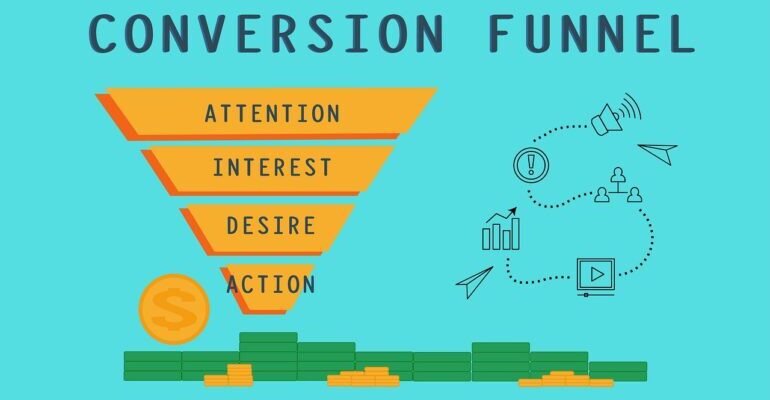Lead management strategy focuses on capturing leads, tracking communication with leads, and engaging them until they convert and purchase your product or service. The success of your business depends on the efficiency of the strategy you apply. With that in mind, let’s take a look at some of the most important steps of creating your lead management strategy.
Step 1 – finding leads
Leads management for moving companies is a bit specific when compared to other industries. Although the strategy revolves around similar concepts, it is a bit more difficult to find and capture leads. Moving a family to a new home, or maybe a different country is a more challenging process than, let’s say, going to a store to buy shoes. That’s why people are pickier about their choice of a moving company.
Finding leads depends on a few factors:
- the way you present your services;
- the communication channels you use;
Your service catalog on the website needs to be perfect. When potential clients visit the company website, they need to get all the information immediately. You need to have this ready before you even reach out to leads. The first thing they will do is do a search on their own.

When it comes to communication channels, besides the website you can use emails, social media, paid ads, webinars, or events. There is also good old advertising via flyers and posters.
Once you have a steady influx of new leads, you can work on the next step.
Step 2 – storing lead data
Whenever you are working with data, you need to store it somewhere. Companies often struggle with finding the perfect database. It is a common situation that a company uses multiple platforms because they need more functionalities. Luckily, the perfect software for keeping track of lead data is customer relationship management software for movers.
CRM allows you to create lead profiles, collect and store data, do analysis and reports, and track your leads through the sales funnel.
When it comes to customer data, you need to collect:
- contact information;
- their needs and requirements;
- customer demographics;
All of this will help with the next step in creating your lead management strategy.
Step 3 – lead scoring
If you have 100 leads in your database, that does not mean that all leads will convert to paying customers at the end. However, even if there are just 5 leads that become clients, you still need to treat them all the same way. That is a huge waste of time and resources. You don’t have the luxury of speaking with anyone while trying to find your perfect clients.
To save time and increase the productivity of your sales agents, you need to work on lead scoring. This is a process that uses the data you collected to sort out leads and return the ones with the highest probability of making a purchase.

For example, let’s say you have a lead ‘A’ that spoke with your sales agent about the potential relocation coming up in a few months. They are considering moving to a new city, and are still looking for options because they are not clear on the destination. They simply want to check the prices, and how the moving process functions. Now, you have a lead ‘B’ that has a last-minute relocation coming up in the next few days.
Even though you do need to provide the information to lead A, you need to prioritize lead B. This is just an example of what lead scoring gets you. Through a system of assigning points to leads, you will discover more important leads that need your immediate attention.
Step 4 – lead distribution
To engage leads and make sure they convert to paying customers, you first need to distribute them among your sales reps. This is a crucial part because you want to split the job equally.
If you have one sales rep handling 20 leads, and three reps handling five, mistakes are bound to happen. If a sales rep cannot handle the amount of work, they will not equally invest themselves into speaking with all clients. They might also forget to contact leads or make any other mistakes.
Furthermore, you want to equally distribute leads to all sales reps, do not play favorites. While it is true that some sales reps are simply better in their job, that does not mean all leads should go to them. Invest time into working with other sales reps and make sure they all provide the same level of quality.
Once everyone has their leads, they can start contacting them and making sure they are moving closer to closing the deal. Communication is crucial during this period. All reps should stay in touch with their leads, answer their questions, and check-in with them from time to time. Try to understand what leads think about your services, answer their questions, and find out if there are any second thoughts about closing the deal, and why.
Step 5 – closing the deal
Once a lead decides to make the purchase, you successfully acquired a new customer. When it comes to the moving industry, you need to make sure you do everything you can to secure a higher conversion rate. There are many other companies in the business, and the number of relocations is growing. Furthermore, even after the client makes a purchase, you still need to be there for all their questions. This is where customer service software for movers plays a crucial role.

You need a system that will record customer calls, redirect clients to the correct department, or play a generic message via IVR. All of this is a part of the customer journey and the overall experience.
Creating your lead management strategy made simple
Even though you have all the steps for creating your lead management strategy, do not take this process lightly. We have simplified the general path, but all of this requires thorough planning. If there is one thing we would like to emphasize at the end, that’s the importance of customer communication. Always stay in touch with your leads, and make sure they have all the necessary attention.
Stay Informed
Subscribe for industry
news & updates
"*" indicates required fields

